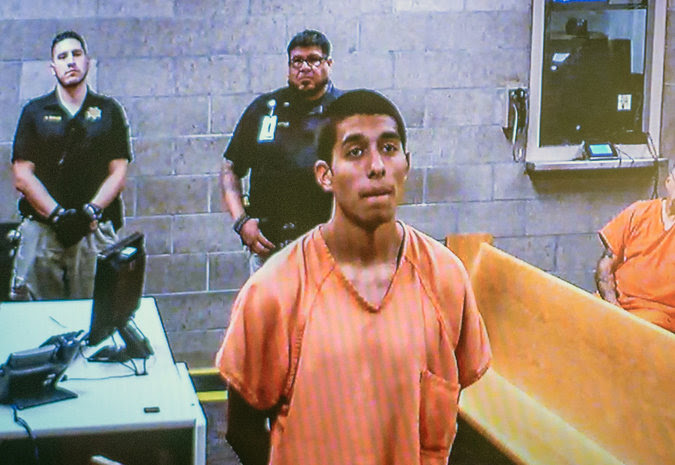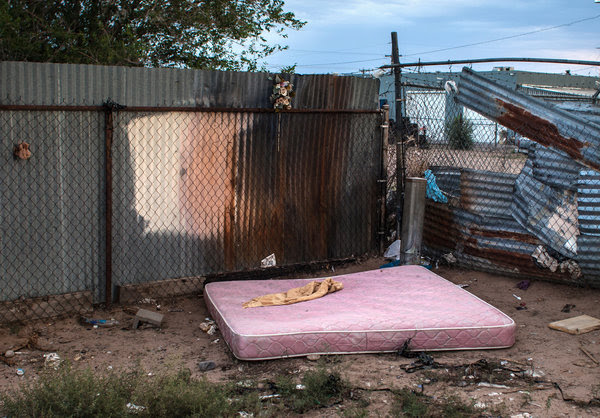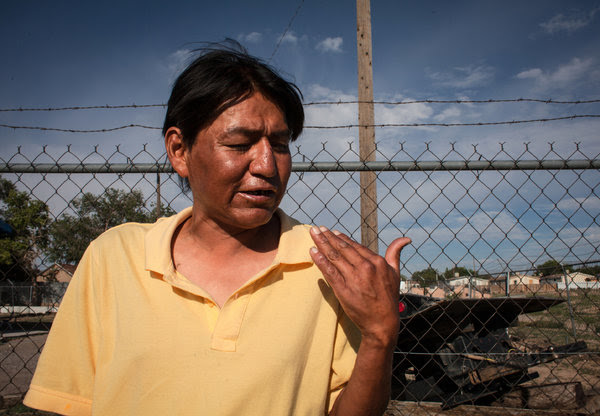NOTES BY NORSE: The Sacramento ACLU has moved to challenge its anti-homeless panhandling prohibitions. The legal eagles who put together the Sacramento County panhandling ban included an exemption for charitable groups which clearly discriminates against those begging for their own survival and/or that of their family and friends. Local Attorney Mark Merin has a history of standing up for homeless people in Sacramento both in court and even personally supporting a homeless encampment on private property (that was ultimately shut down by city bigotry). [See http://sacramentohomeless.
Santa Cruz’s panhandling law has had one successful court challenge: http://la.indymedia.org/news/
The local ACLU has so far declined to make any public statements about this law, overtly abusive though it is to the rights of poor people (and those who want to donate to their survival).
Homeless activists sue Sacramento County to block panhandling ban
By Brad Branan
bbranan@sacbee.com
Published: Thursday, Jul. 17, 2014 – 12:32 pm
Last Modified: Friday, Jul. 18, 2014 – 7:01 am
Supervisors unanimously passed the ordinance in May, which prohibits aggressive panhandling anywhere in the unincorporated county and bans solicitation specifically at street medians, banks, ATMs and gas stations.
The advocacy group, which publishes a bimonthly newspaper dedicated to homeless issues, is being represented in federal court by the American Civil Liberties Union of Northern California and local attorney Mark Merin. ACLU Legal Director Alan Schlosser said the plaintiffs want a hearing within a week for a temporary injunction to suspend the ordinance, which took effect June 13.
Schlosser said the new law violates the U.S. Constitution by allowing charities to collect money in public places but banning panhandlers from doing so.
Panhandling restrictions have been approved by local governments across the state, including Citrus Heights, Elk Grove and Sacramento. But Sacramento County appears to be unique in creating an exemption for a group of people, Schlosser said.
The exemption and a desire to stop the law from ever being enforced were reasons for the ACLU to challenge the law, he said.
“They were certainly not intending to limit aggressive panhandling,” Schlosser said. “They are trying to push the homeless out of town.”
County spokeswoman Chris Andis said it’s county policy not to comment about pending litigation.
However, Supervisor Roberta MacGlashan defended the ordinance.
“Staff went to great lengths to write a law that recognizes the constitutional right to panhandling, but also restricts its locations where people feel vulnerable,” she said.
Earlier this month, Rancho Cordova tentatively approved a similar restriction on “aggressive panhandling” that prohibits solicitation in places where people are a “captive audience” to pleas for money. The law must be approved a second time next week before becoming law.
A city staff report said the amendment is legal based on recent court decisions and “the regulations are content neutral, meaning the regulations do not treat individuals differently depending on their message.” The regulations must also “serve an important government interest.”
Pamela Poole, executive director of the Sacramento Homeless Organizing Committee, said she and other homeless members of the committee are worried that the county law will prohibit them from collecting donations in conjunction with the distribution of Homeward, which has a circulation of 8,000 to 11,000. Homeless people get copies of the newspaper free or for a nominal fee and then seek a recommended donation of $1 for each paper, which they keep.
Billy Murphy, a plaintiff in the case, said he has largely relied on panhandling for income since becoming homeless in October. He said he has stopped panhandling in Citrus Heights after being cited there in March, and he worries that Sacramento County’s ordinance will have the same effect on him.
Murphy said he generally panhandles on sidewalks and doesn’t solicit people verbally. Instead, he just holds signs, such as “Homeless Will Work Have Bike Will Travel … Please Help.”
“I just want people to know I need help,” he said.
A county spokesman said last week that the county is spending the first two months educating residents about the law and has not yet issued citations. Under the law, violations would be cited as an infraction, with three infractions in six months resulting in a misdemeanor charge.
Representatives of the Watt Avenue Merchants Association, the Fulton Avenue Association and the Florin Road Partnership told the board in May that they support the ban. They said panhandling seems to be on the rise in certain parts of the county.
Read more here: http://www.sacbee.com/2014/07/
SANTA CRUZ’S PANHANDLING PROHIBITIONS
MORE NOTES BY NORSE: The especially egregious and unconstitutional sections of the ordinance are emboldened. However the massive sweep of the law so restricts the place, time, and manner of the laws as to make illegal peaceful non-threatening non-obstructive forms of sparechanging. The “forbidden zones”, for instance, created for panhandling both in time and space leave very little opportunity for making donation requests. Asking a friend for money is illegal, for instance (and has reportedly been charged in the past if the person looks homeless enough and the cop wants to drive the person away). People have spent months in jail panhandling. Particularly misleading is the title of the law “Aggressive Solicitation”. Only 3 of the 28 provisions of the law [MC 9.10.040 b, c and d] can be reasonably considered restrictions on “aggressive” panhandling. The rest seek to wash poor people from the sight of tourists and residents.
Chapter 9.10 AGGRESSIVE SOLICITATION
Sections:
9.10.010 Definitions.
9.10.020 Time of solicitation.
9.10.030 Place of solicitation.
9.10.040 Manner of solicitation.
9.10.050 False or misleading solicitation.
9.10.060 Misdemeanor.
9.10.010 DEFINITIONS.
For the purposes of this chapter:
(a) “Solicitation” means any verbal request, or any non-verbal request made with a sign, by a person seeking an immediate donation of money, food, cigarettes or items of value. Purchase of an item for an amount far exceeding its value, under circumstances where a reasonable person would understand that the purchase is in substance a donation, is a donation for purposes of this chapter. A person is not soliciting for purposes of this chapter when he or she passively displays a sign or places a collection container on the sidewalk pursuant to which he or she receives monetary offerings in appreciation for his or her original artwork or for entertainment or a street performance he or she provides. This chapter does not apply to peddling and soliciting activity governed by Chapter 5.40.
(b) “Person” means any individual person, group of persons or organizations.
(Ord. 2009-05 § 3, 2009: Ord. 2002-51 § 1, 2002: Ord. 2002-39 § 1, 2002: Ord. 2002-32 § 1, 2002: Ord. 94-10 § 1 (part), 1994).
9.10.020 TIME OF SOLICITATION.
Any person who solicits after sunset or before sunrise is guilty of an infraction.
(Ord. 94-10 § 1 (part), 1994).
9.10.030 PLACE OF SOLICITATION.
Any person who solicits in any of the following places, or any person who solicits when the person solicited is in any of the following places, is guilty of an infraction:
(a) At any bus stop;
(b) In any public transportation vehicle or facility;
(c) In any vehicle on the street;
(d) On private property, unless the solicitor has permission from the owner or tenant;
(e) Within fourteen feet of any building other than those buildings referenced in subsection (f). Where any portion of a building is recessed from the public sidewalk, the fourteen feet shall be measured from the point at which the building abuts the sidewalk;
(f) Within fifty feet of any bank building or other financial institution buildings, including their outdoor automatic teller machines;
(g) In the parking lot of any bank, savings and loan, or other financial institution;
(h) Within fifty feet of any ATM machine or cash disbursal machine, or any other outdoor machine or device which disburses or accepts coins or paper currency except parking meters and newspaper vending machines;
(i) Within fourteen feet of any fence that abuts a public sidewalk;
(j) Within fourteen feet of any drinking fountain, public telephone, public bench, public trash compactor, information or directory/map sign, sculpture or artwork displayed on public property, or vending cart;
(k) Within fourteen feet of any street corner or intersection;
(l) Within fourteen feet of any open air dining area or cafe extension; or
(m) Within fourteen feet of any kiosk.
(Ord. 2009-05 § 4, 2009: Ord. 2002-39 § 2, 2002: Ord. 2002-32 § 2, 2002: Ord. 94-10 § 1 (part), 1994).
9.10.040 MANNER OF SOLICITATION.
Any person who solicits in any of the following manners is guilty of an infraction:
(a) By coming within three feet of the person solicited, until that person has indicated that he or she wishes to make a donation;
(b) By blocking the path of the person solicited, or other pedestrians, along a sidewalk or street;
(c) By following a person who walks away from the solicitor;
(d) By using abusive language as part of the solicitation or following a refusal that is directed at the specific individual or individuals being solicited;
(e) By soliciting in a group of two or more persons;
(f) While under the influence of alcohol or any illegal narcotic or controlled substance; or
(g) By soliciting while in the immediate possession of a dog, by leash or otherwise.
(Ord. 2011-08 § 9, 2011: Ord. 2006-06 § 1, 2006: Ord. 94-10 § 1 (part), 1994).
9.10.050 FALSE OR MISLEADING SOLICITATION.
(a) Any person who knowingly makes any false or misleading representation in the course of soliciting a donation is guilty of an infraction. False or misleading representations include, but are not limited to, the following:
(1) Stating that the donation is needed to meet a specific need, when the solicitor already has sufficient funds to meet that need and does not disclose that fact;
(2) Stating that the donation is needed to meet a need which does not exist;
(3) Stating that the solicitor is from out of town and stranded, when that is not true;
(4) Stating that the solicitor is homeless, when he or she is not;
(5) Stating that the solicitor is soliciting on behalf of an organization which does not exist or which has not authorized the solicitor to seek donations on its behalf.
(b) Any person who knowingly solicits a donation stating that the funds are needed for a specific purpose and then spends the funds received for a different purpose is guilty of an infraction.
(Ord. 94-10 § 1 (part), 1994).
9.10.060 MISDEMEANOR.
Any person who violates one or more of the sections of this chapter twice within a six-month period is guilty of a misdemeanor.
(Ord. 94-10 § 1 (part), 1994).



